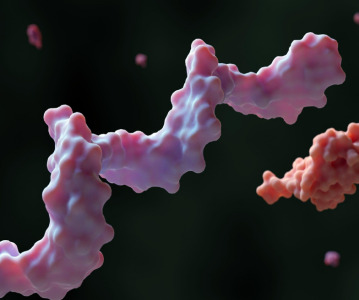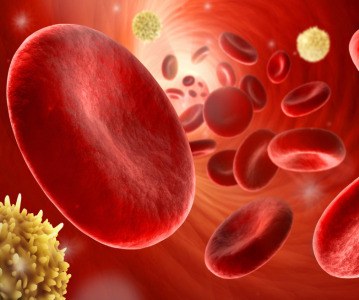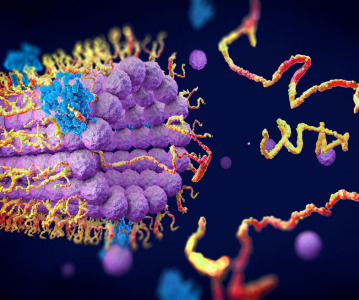Regeneron and Sanofi announce new Praluent injection analyses presented at AHA scientific sessions 2015

74% of patients reached their LDL cholesterol goals on 75 mg dose; Of the remaining patients whose dose was adjusted to 150 mg, most achieved their goal.
Regeneron Pharmaceuticals and Sanofi have announced a new post-hoc analysis of six Phase III clinical trials showing that approximately three quarters (74%) of patients reached their pre-specified LDL cholesterol targets within 8 weeks of adding Praluent (alirocumab) Injection 75 mg to their standard-of-care, which included statins. In the 26% of patients whose dose was increased to 150 mg, most were able to achieve their pre-specified LDL cholesterol target, with an average additional 14% reduction in LDL cholesterol. The results from this and other analyses, which evaluated Praluent every 2 weeks, were presented at the American Heart Association (AHA) Scientific Sessions in Orlando, FL.
"In this analysis of patients who required further improvement of their LDL cholesterol levels, adding Praluent 75 mg to their standard-of-care allowed the majority of patients to achieve their LDL cholesterol goals. For those who required further LDL cholesterol lowering, increasing Praluent to 150 mg provided additional efficacy," said Harold Bays, from the Louisville Metabolic & Atherosclerosis Research Center, Kentucky, US. "Data such as these provide clinicians practical insight as to how the two Praluent doses may better allow patients to achieve their LDL cholesterol goals."
These results are based on a pooled post-hoc analysis of 1,291 patients with high cardiovascular (CV) risk or an inherited form of high cholesterol (heterozygous familial hypercholesterolemia, or HeFH) which found 74% of patients who added Praluent 75 mg achieved their LDL cholesterol-lowering goals at week 8, and the remaining 26% had their dose adjusted to 150 mg at week 12. In other results:
In a separate pooled post-hoc analysis of 3,499 patients, individuals with diabetes (n=1,051) who initially received Praluent 75 mg or 150 mg every 2 weeks had a mean percent difference in LDL cholesterol of 44% and 58%, respectively, versus placebo at week 24 (p less than 0.0001). In other results:
A third post-hoc analysis of 4,974 patients did not find an increased risk of diabetes-related AEs among those who didn't have diabetes when they entered the trials, regardless of whether they were taking Praluent or were in a control group (placebo or ezetimibe). There was also no evidence that Praluent affected the incidence of new-onset diabetes or pre-diabetes. The ongoing ODYSSEY OUTCOMES trial will provide further data on the impact of Praluent on glycemic measures.
Related News
-
News Google-backed start-up raises US$600 million to support AI drug discovery and design
London-based Isomorphic Labs, an AI-driven drug design and development start-up backed by Google’s AI research lab DeepMind, has raised US$600 million in its first external funding round by Thrive Capital. The funding will provide further power t... -
News AstraZeneca to invest US$2.5 billion in Beijing R&D centre
Amid investigations of former AstraZeneca China head Leon Wang in 2024, AstraZeneca have outlined plans to establish its sixth global strategic R&D centre in China. Their aim is to further advance life sciences in China with major research and manufact... -
News Experimental drug for managing aortic valve stenosis shows promise
The new small molecule drug ataciguat is garnering attention for its potential to manage aortic valve stenosis, which may prevent the need for surgery and significantly improve patient experience. -
News How GLP-1 agonists are reshaping drug delivery innovations
GLP-1 agonist drug products like Ozempic, Wegovy, and Mounjaro have taken the healthcare industry by storm in recent years. Originally conceived as treatment for Type 2 diabetes, the weight-loss effects of these products have taken on unprecedented int... -
News A Day in the Life of a Start-Up Founder and CEO
At CPHI we work to support Start-Up companies in the pharmaceutical industry and recognise the expertise and innovative angles they bring to the field. Through our Start-Up Programme we have gotten to know some of these leaders, and in this Day in the ... -
News Biopharmaceutical manufacturing boost part of new UK government budget
In their national budget announced by the UK Labour Party, biopharmaceutical production and manufacturing are set to receive a significant boost in capital grants through the Life Sciences Innovative Manufacturing Fund (LSIMF). -
News CPHI Podcast Series: The power of proteins in antibody drug development
In the latest episode of the CPHI Podcast Series, Lucy Chard is joined by Thomas Cornell from Abzena to discuss protein engineering for drug design and development. -
News Amgen sues Samsung biologics unit over biosimilar for bone disease
Samsung Bioepis, the biologics unit of Samsung, has been issued a lawsuit brought forth by Amgen over proposed biosimilars of Amgen’s bone drugs Prolia and Xgeva.
Recently Visited
Position your company at the heart of the global Pharma industry with a CPHI Online membership
-
Your products and solutions visible to thousands of visitors within the largest Pharma marketplace
-
Generate high-quality, engaged leads for your business, all year round
-
Promote your business as the industry’s thought-leader by hosting your reports, brochures and videos within your profile
-
Your company’s profile boosted at all participating CPHI events
-
An easy-to-use platform with a detailed dashboard showing your leads and performance







.png)